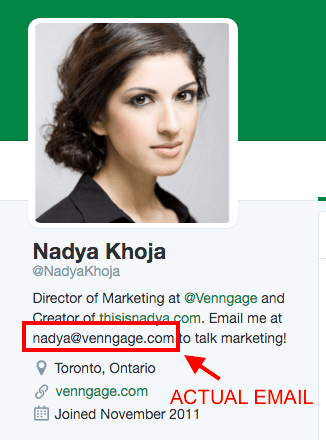
Everyday for the past year I’ve sent out between 20 to 100 outreach emails and have received over a dozen a day myself. Needless to say I understand what it’s like to face rejection, and often times when I face heavy rejection, it’s well deserved.
That being said, I’m not a big fan of being ignored and have worked hard towards continuously improving exactly how I phrase my outreach emails. After much re-working, I’ve managed to maintain a 70 percent to 80 percent open rate.
As a result, when I now receive an email that simply doesn’t meet my standards of a good pitch, I have no problem clicking the trash icon.
Recently, it’s become somewhat disconcerting that the majority of the emails I’ve received have been condemned to the delete folder.
I couldn’t help but ask myself why? Why are so many individuals struggling to get the outreach email right? Thus I came to the conclusion that they simply don’t have a solid resource which they can reference in times of need.
So today I tell you, I have taken the time and liberty to provide you with such a resource so that not only will your requests finally be acknowledged, but so that I will also stop getting annoying pitches.
Here we go…
First things first:
There does not just exist one type of outreach email.
Take a moment to digest this new information. I know it might come as a shock to those of you who have a go-to email template that you can simply copy and paste to everyone for any occasion. But word to the wise, no one’s reading it.
In fact, there exist tons of different email outreach templates, but we’re going to focus on the following two variations:
- The “I want to contribute a guest post” email
- The “Can you share this article” email
If you’ve been getting terrible results with your existing outreach methods, I guarantee you that after using the following methods, you’ll be acknowledged at the least.
The ‘I want to contribute a guest post’ Email
This is the most common email pitch out there. Everyone wants to write a guest post for high domain authority sites because they understand the benefits associated with it, such as more SEO juice and a potential increase in blog traffic. But in case you haven’t clued in, the reason those sites withhold such a high DA is because their content is top-notch, written gold!
The editors of sites like these want to ensure one very important thing:
- That their readers will read the content and enjoy it
How do you reassure an editor that your writing will meet their very high standards? Well one thing is for sure, if your email doesn’t hit the mark, chances are your content won’t either.
Start by reading the articles that already exist on the site. This may seem obvious, but I mean really read them. Understand the tone and language used, and phrase your email in a similar way.
Here is an example of a not-so-great pitch I received a couple of days ago. I took the liberty of adding some of my thoughts:

A few things to note about this particular pitch:
First:
This individual who I have renamed “Stu”, did not even bother to find the direct email address of the person in charge of marketing (me). Instead they emailed our support staff who then had to forward the message to yours truly.
Just so you are aware, this is currently what my Twitter bio looks like:

So it’s pretty easy to reach me. That’s strike one.
Second:
Nobody’s addressed in the email. No Hello Nadya. Just Hi. This can easily be remedied with a mail merge tool like Yet Another Mail Merge or Connector.io, both of which include presets for a template so it’s easy to automatically add a person’s first name, last name, email, company and more!
That’s strike two.
Three:
I have no idea what is actually being pitched! There’s no title, no examples of previous writing, no outline – nothing. That’s strike three.
So to summarize:
- Don’t send a general email to your whole list. Do address a specific person by their first name.
- Don’t email the company’s support team. Do some research and find the head of marketing, or the editor’s direct email (unless there’s an email specifically dedicated to guest submissions).
- Don’t forget to prove yourself worthy. Do include a list of publications where you have submitted your writing in the past.
Now that you know what not to do, let’s focus on more of what you should do in a little more detail:
- Write a good subject line
- Research the publication
- Research the writing style
- Research the editor or content marketer
- Research specific articles
- Learn how to write
Write a good subject line
When you’re writing your subject line, keep in mind that the emails which get opened most tend to appeal to utility and to curiosity. How is this email going to provide practical value to the person opening it? Is there an interesting story?
In an analysis conducted by MailChimp, the real secret behind writing the perfect subject line is to simply describe the subject of your email. In other words, subject lines that are direct and to the point perform best! Easy, right?
Research the publication
Know who you are writing for. What type of content does this publication publish?
If you’re pitching the article ‘Top 10 Cheeses To Try This Valentine’s Day’ to Computers R Us… you might want to reconsider.
Ensure that the content you are providing is suitable to the site’s audience. Don’t just mass pitch the same article to every Joe Blow on the block.
Research the editor or content marketer
This is the person who is going to be the one to OK your pitch. Make sure to address this individual by name, and do some research on them. Follow this person on Twitter and try to establish somewhat of a presence or relationship so your pitch isn’t a cold pitch, but rather a warm pitch.
Research specific articles
When you reach out to the editor, try to reference a specific article on the site you liked, or one that they wrote. Show that you are an active reader and actually know their material.
Learn to write
Proof-read your email. Check your grammar. Speak like someone who lives in 2016 and not 1620. Don’t try to sound too intelligent, and be friendly. Most people prefer to read articles that are written at a sixth or seventh grade level. So if the concept you’re explaining isn’t clear to a 12 year old, it’s not clear to the average person.
If you can follow the above five steps, your outreach email will see much better results! But in case that’s still too difficult, here is a template you can reference:
Subject line: Contributing to [name of publication]: [Title of article being pitched]
Hi <<First name>>,
Hope you’re having a great week so far. I’m a long-time reader of [name of publication] and just came across this article [title and link to article]. Loved it!
I’m reaching out because I’m interested in contributing a guest post. I’ve written for [list places and links to articles you have written] and think my writing style and content would provide some practical insights for the readers of [name of publication].
The article I had in mind is: [Title of original article concept]
What steps can I take to ensure having my writing featured in the near future?
I’m excited to hear your thoughts!
Take care,
[Your name]
Tada! The structure is there for you, now all you have to do is fill in the blanks.
The ‘can you share this article’ email
Maybe you’re thinking,
“Well gee, Nadya, that’s great and all, but what if I don’t want to contribute a guest post? What if I want people to share my content for me?”
Don’t worry. I’ve got you covered.
The “Can you share this article” email is one I know all too well, because I send it out quite frequently. This particular email is a bit trickier because for the most part, you want to establish a relationship with your contact list first, so that they are more willing to continue sharing your content in the future.
This particular email is a two-step approach:
- Step 1: The Compliment
- Step 2: The Ask
If you’ve ever attempted going on an online date, think of this outreach email as a similar process.
Let’s say you just matched with someone on Tinder. You decide to make the first move and send the initial message. You can’t just jump the gun and ask the other person out! They know nothing about you and will likely be hesitant to even respond.
You need to warm them up and charm them to a certain degree, so that when you finally ask them out, they can’t help but say yes.
Step 1: The compliment
Once you’ve gathered a list of influencers to outreach to, begin by sending them an initial email introducing yourself and getting a dialogue going.
Much like the “I want to contribute a guest post” email, you want to compliment this individual on an article of theirs which you read. Simply reach out and let them know you read it and that you enjoyed it. End your email explaining that you just wanted to reach out, connect and get a dialogue going.
Finally, ask them to keep in touch and share any new content with you.
If they respond to your email, then you can move on to Step 2.
Step 2: The ask
The great part about Step 2, is that you already have a connection with the person you are asking a favor of. Hurray!

You scratch their backs, they scratch yours, right?
If they don’t get back to you in a couple of days, send them a follow-up email asking if they saw your previous one. It increases the chances of them getting back to you by 54 percent.
But I’ve tried both those methods and still no luck
If after all that you’re still having terrible luck getting any response from your outreach list, you should probably just give up.
JOKING.
Don’t give up. There is another tactic you can try, but it does require a bit of extra work on your end.
Create free content for people.
You read it right. It works. People love free stuff, and it was through a method like this that Venngage grew its traffic by over 400 percent in less than a year.
The team used the infographic maker to create free infographics for various marketing influencers. The result was not only a boost in SEO, but strong relationships were formed with some very influential marketing and tech professionals.
Free content is not limited to infographics. Other options include repurposing blog posts into powerpoint templates that influencers can upload to SlideShare, making eBooks and video content, as well as participating in content swaps, and offering other individuals an opportunity to promote their content on your site.
The point is, use your skillset to your advantage.
Do you own a survey data company which you can use to provide free surveys for influencers? Do you have a knack for making gifs and memes? Are you a pro at using Vine? What is your skill and how can you use it to help foster new relationships, and give your own business a boost?
Final words of wisdom
In an effort to be completely transparent, I will bluntly state this: if your outreach emails aren’t getting read it’s because you are doing something wrong. There are hundreds of different articles and guides about formulating the perfect pitch, and boosting your open rates by exponential numbers, but these various methods work differently for different people.
If you place relationship building and providing value to an audience as your main two goals, chances are your results will be much better.
Why do people click an email to begin with? It’s because they think it will unveil something useful or important.
Focus on giving your reader something that will benefit them, and sure enough you’ll start noticing that not only are people reading your emails, but they are actually responding to them too.
Get the TNW newsletter
Get the most important tech news in your inbox each week.




